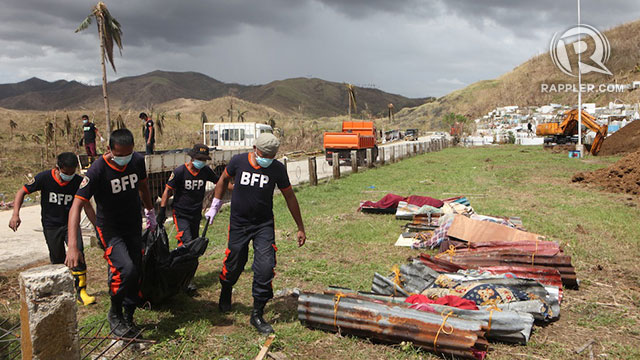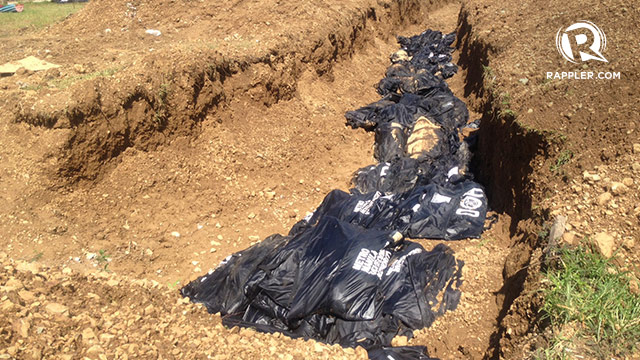SUMMARY
This is AI generated summarization, which may have errors. For context, always refer to the full article.

TACLOBAN CITY, Philippines – On Friday, November 15, Melvin Lasi buried his grandfather a day after his body was found under the rubble of his neighbor’s house. It’s been a week since the old man was killed by Super Typhoon Yolanda (Haiyan).
Lasi’s grandfather was one of the 801 people who died based on the latest count of the Tacloban City government. The death toll is expected to rise in the coming days as retrieval operations continue. “The final figure will be significantly higher,” Tacloban City Mayor Alfred Romualdez said in a press briefing on Friday, November 15.
Unlike Lasi’s family, other survivors could not properly mourn and bury their dead. Only about 10-15% of the bodies were identified, Romualdez said.
Starting Wednesday, November 13, many of the dead were laid in a temporary mass grave dug in a public cemetery in Basper, a village in the outskirts of the city.
On Thursday, November 14, at least 105 bodies were put in a long trench dug by a backhoe inside the cemetery. Hundreds of cadavers in black bags rotting in front of the city hall for a week were transported to the mass grave as Romualdez was holding the press conference.
Lack of manpower
Asked what took the government so long to bury the dead, Romualdez said the city lacked manpower. He added that he “constantly requested” help from the national government to retrieve bodies but understood that it could only do so much with what it has.
But according to Interior and Local Government Secretary Mar Roxas, the government has mobilized its assets and is following a protocol for identifying and burying the dead.
The process allows survivors to identify their dead while protecting the health of the public and water sources. “Sinusunod naman iyan lahat,” Roxas said in a press conference late Friday afternoon, November 15. (We follow everything.)
Romualdez earlier gave assurances the Philippine National Police Scene of the Crime Operatives and the National Bureau of Investigation conducted “dead victim processing” in coordination with the Department of Health. This will help provide closure to survivors in the future, if not today, officials explained.
Romualdez said he will wait for the recommendation of the agencies on when the graves can be covered. Bodies can be exhumed and identified in the future.

Protect the living
Mayor Remedios Petilla of the nearby town of Palo could not wait, however. “We don’t care any more. We just told them we’ll bury them, give them a decent burial, blessing from the church and all that,” Petilla said.
According to the mayor, she waited for 3 days “but we were not provided with body bags.” As of Thurday, November 14, at least 813 casualties – 30% of which were not identified – were buried in batches of a hundred per mass grave.
“We’re trying to protect the living,” Petilla said, adding that she made the choice to prevent the contamination of water and the spread of disease in her town.
The death toll in the aftermath of Yolanda has reached over 3,600 so far, the National Disaster Risk Reduction and Management Council reported on Friday, November 15. – Rappler.com
Add a comment
How does this make you feel?
There are no comments yet. Add your comment to start the conversation.